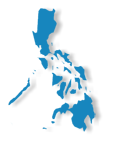Baguio City 
20505baguio-city




















The City of Baguio is a highly urbanized city in northern Luzon in the Philippines. Baguio City was designated by the Philippine Commission as the Summer Capital of the Philippines on June 1, 1903. The name Baguio conjures, for both the international and domestic traveler, a highland retreat in the Grand Cordillera in Northern Luzon, with pine trees, crisp cold breezes and low verdant knolls and hillocks. Through the numerous decades Baguio has morphed from what was once a grassy marshland into one of the cleanest and greenest, most highly urbanized cities in the country. It has made its mark as a premiere tourist destination in the Northern part of the Philippines with its cool climate, foggy hills, panoramic views and lovely flowers.
Being the ideal convergence zone of neighboring highland places, Baguio is the melting pot of different peoples and cultures and has boosted its ability to provide a center for education for its neighbors. Its rich culture and countless resources have lured numerous investments and business opportunities to the city.
The name of the city is derived from the word bagiw in Ibaloi, the indigenous language of the Benguet Region, meaning 'moss'.
The city is at an altitude of approximately 1500 meters (5100 ft) in the Luzon tropical pine forests ecoregion conducive to the growth of mossy plants and orchids. Baguio City has become the center of business and commerce as well as the center of education in the entire Northern Luzon.
Baguio City is approximately 250 kilometers north of Manila, situated in the Province of Benguet. The area of the city is 49 square kilometers enclosed in the perimeter of 30 kilometers. The developed portion of the city corresponds to the plateau that rises to an elevation of 1,400 meters. Most of it lies in the northern half of the city. The City is landlocked within the province of Benguet, thus bounding it on all sides by its different municipalities; on the North by the capital town of La Trinidad, on the East by Itogon and to the South and West by Tuba. With City Hall as reference point, it extends 8.2 kilometers from East to West and 7.2 kilometers from North to South. It has a perimeter of 30.98 kilometers.
Baguio is 8 degrees cooler on the average than any place in lowlands. When Manila sweats at 35 degrees centigrade or above, Baguio seldom exceeds 26 degrees centigrade at its warmest. Baguio is very wet during the Philippine rainy season, which is from June to October. It gets the biggest amount of rainfall in the country, twice the volume of rainfall in the country as compared to Manila.
Ilocano is the predominant dialect in the city. The national language, Filipino, is of course spoken by almost everyone. English is widely spoken and understood. It is the medium of instruction in all public and private schools. Most newspaper and magazines are printed in this language and the English-speaking traveler would not encounter any communication problems. Religiosity is a basic socio-cultural characteristic that makes the Filipino character distinct and unique as manifested likewise by Baguio residents.
Baguio City is also the Ghost Capital of the Philippines.
Tourism is one of Baguio's main industries due to its weather and history. During the year end holidays some people from the lowlands prefer spending their vacation in Baguio, to experience cold temperatures they rarely have in their home provinces. Also, during summer, especially during Holy Week, tourists from all over the country flock to the city. During this time, the total number of people in the city doubles.
To accommodate all these people there are more than 80 hotels and inns available. Local festivities such as the Panagbenga Festival also attract both local and foreign tourists.
Baguio City is the lone Philippine destination in the 2011 TripAdvisor Traveler's Choice Destinations Awards, Asia category, with the city being among the top 25 destinations in Asia
By air:
Loakan Airport is the lone airport serving the general area of Baguio City. The airport is classified as a trunkline airport, or a major commercial domestic airport, by the Civil Aviation Authority of the Philippines, a body of the Department of Transportation and Communications that is responsible for the operations of not only this airport but also of all other airports in the Philippines except the major international airports. It is about 10 minutes by car from the city center going south. Due to the limited length of the runway which is 1,802 meters or 5,912 feet, it is restricted to commuter size aircraft. This perhaps contributed to the city's declining competitiveness against other medium-sized cities around the country. The airport is used primarily by helicopters, turbo-prop and piston engine aircraft, although on rare occasion light business jets (LBJ) have flown into the airport.
On land
The three main access roads leading to Baguio from the lowlands are Kennon Road, Aspiras-Palispis Highway (formerly Marcos Highway),[8] and Naguilian Road also known as Quirino Highway. Kennon Road starts from Rosario, La Union and winds through a narrow, steep valley. This is the fastest route to Baguio but is perilous, with landslides during the rainy season. This route to Baguio is as scenic as it is dangerous. Aspiras Highway, which starts from Agoo, La Union and connects to Palispis Highway at the boundary of Benguet and La Union, and Naguilian Road, which starts from Bauang, La Union, are longer routes but are safer than Kennon Road and are the preferred routes for coaches, buses and lorries.
It takes an average of six hours to travel the 250 km distance between Manila and Baguio by way of Kennon Road. It is about fifteen minutes longer through the Aspiras-Palispis Highway and could take three more hours when going through Naguilian Road, which is the usual route for travelers from the North.
There is another access to Baguio from Aritao in the province of Nueva Vizcaya passing through Itogon, Benguet but this is less traveled, the road is not well maintained, and public transportation through this route is not as regular. Another road, Halsema Highway (also known as "Mountain Trail") leads north through the mountainous portion of the Cordillera Autonomous Region. It starts at the northern border of Baguio, in the Municipality of La Trinidad (Trinidad Valley).
There are several bus lines linking Baguio with Manila and Central Luzon, and provinces such as Pangasinan, La Union, and those in the Ilocos region.Most transportation companies also offer express and air-conditioned buses at a much higher fare, though some minibuses offer cheaper fares. Bus services that operates in Baguio include Philippine Rabbit, Dangwa Tranco, Dagupan Bus, Victory Liner, Partas, Genesis, and Saulog Transit.
There are also several Taxi and jeepney operators that provide transportation within the city.
Want to earn rewards while you search the web?
Try
![]() Bing Rewards now.
Bing Rewards now.
Need to send money to the Philippines? Use Remitly.





